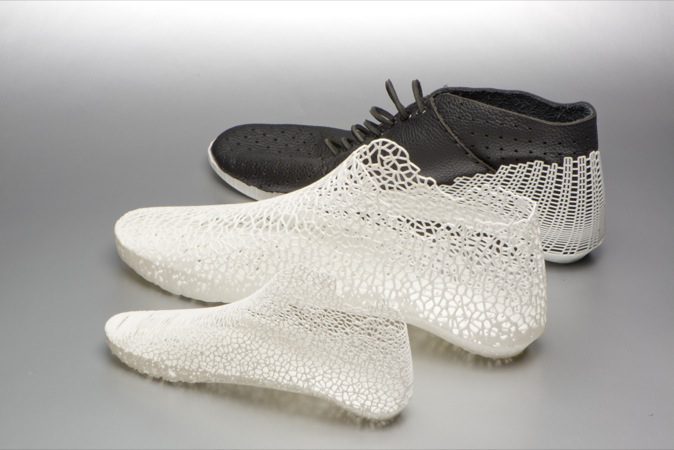
In the sports world, gear that offers the best protection, performance and comfort can mean the difference between losses and wins or simply your ability to enjoy your favorite sporting activities. A growing demand for customization, both on an aesthetic and ergonomic level and the shift to digital manufacturing has made 3D printing a logical choice to deliver next-level sporting equipment.
Thanks to 3D scanning technology, sports equipment can be adapted based on the athlete’s body structure as well as their individual techniques. It can be produced with lightweight, affordable and sustainable materials that are both flexible and durable providing a perfect custom fit and better protection from injury. Here are some of the ways 3D printing is utilized to produce advanced sporting equipment.
Protective Gear Tailored to Your Body
Helmets
Helmets provide some of the most important protection when engaging in any physical activity and require extensive testing in shock absorption and shell deflection to meet safety standards. Customization can allow for better comfort, fit and safety for each individual.
Bicycle Helmets
Hexr, an English company, has specialized in making custom 3D printed bike helmets that use 3D scanning to perfectly fit the curvature of the wearer’s head. It features a highly breathable honeycomb structure (as opposed to a typical foam insulation) made from renewable materials and an interchangeable outer shell. According to Folksam’s bicycle helmet testing, it outperforms standard safety performances by 30%.
Football Helmets
In sports like American football, where head injuries can be more common, continuing to upgrade helmet safety to reduce this possibility is paramount. For an NFL helmet design competition to produce better head protection for players, many of the contestants and designers turned to 3D scanning and printing to create their version of the next best helmet. Each aimed to reduce concussions and create shock absorbent layers perfectly tailored to the player’s head contour. Similar to footwear, the customized padding used as a protective layer inside the helmets often feature a lattice structure that can be thicker in places where protection is more important. The NFL has said that the best and safest prototype, once it has proven to outperform current models, would be worn by players as early as July 2021.
Other Protective Gear
3D printing’s customization power paired with sturdy materials make it suitable for any number of other protective pieces to be made with this technology. Being able to scan a player’s face or body means that they can have their own personalized and perfectly fitted mouth guards, shin guards, protection masks and more. Austrian company Zweikampf has produced lightweight 3D printed shin guards that feature a Y structure that disperses shock across the entire guard instead of just one point and can be personalized with a player’s name and jersey number for added customization.
Ergonomic Customization for a Perfect Fit
Athletic Footwear
Comfort, ergonomics
and performance are the most important aspects of an athlete’s footwear and the
use of 3D scanning and printing emphasizes each of these by offering a
completely custom fit.
Instead of relying on
mainstream half-integer measurements, 3D customized shoes can fit each of a
person’s feet closer than ever before. By utilizing 3D scanning technology it
is possible to capture the exact length, width and volume, arch contour, and
toe spacing, as well as take into account the person’s body weight, and what
kind of impact their particular sport or activity will be placing on the shoes.
One of the ways 3D printing is integrated into footwear is through the creation of lattice midsoles. The midsoles are designed to fit a desired performance and printed according to the exact specifications of the 3D scan to fit the wearer’s feet perfectly. The density of the lattice structure can be altered to different levels throughout the shoe to create custom cushioning as needed to maximize shock absorption and rebound.
Having a material that is lightweight, flexible and durable is crucial to creating the proper balance in athletic footwear. Versatile materials like TPU01 from BASF’s Forward AM material portfolio allow for complex geometries like lattice structures and provide impact absorption that prevents injury, making it an ideal choice for footwear.
Paralympic Equipment and Accessories
Prosthetics
We’ve seen how 3D printing has contributed to advancements in the comfort and fit of prosthetics, as well as increased affordability, and this includes adapted sports prosthetics as well. German paralympic cyclist Denise Schindler partnered with Autodesk to create a polycarbonate prosthetic customized to fit her perfectly and attach to the pedals of her bicycle. Paul Sohi, the product designer working on the prosthetic, used 3D scans of her residual limb to prototype several versions of the prosthetic to create the most aerodynamic version possible.
Wheelchair Sports Accessories
Equipment for wheelchair sports like seats and racing gloves benefit hugely from the ability to scan and customize with 3D printing technology as well. The first 3D printed wheelchair seats were available to players in the 2012 Paralympic wheelchair basketball games, developed by Loughborough University’s Sports Technology Institute. The players were scanned and their seats were customized based on their body’s specifications. A player with a spinal cord injury, for example, could have a seat with an attachment to support their lower back. As a bonus benefit, the 3D printed seats ended up weighing a kilo less than standard seats. Similarly, customized 3D printed wheelchair racing gloves, like those created by Ingenium, can provide improved ergonomics and durability.
Personalized Equipment that Suits Your Taste and Technique
Golf Clubs
Other sports equipment can be customized to improve weight distribution, grip and appearance to suit the player. Several golf companies have begun using additive manufacturing to make precise alterations to their clubs and other equipment. Grismont Paris offers custom golf club heads that can be finished in either gold, copper or metal to suit the player’s aesthetic preferences. Nike has also prototyped a golf ball in which the typical elastomeric inner core and rigid outer shell more seamlessly transitions with the use of 3D printing along with a new geometric configuration called a “void.”
Tennis Rackets
Unstrung Customs produces customizable racket pallets that allow customers to choose their grip size and pallet shape. Where usually players might have their grips sanded to achieve their desired shape, Unstrung Customs designs the perfect shape from the beginning.
3D Printed US Olympic Team Sled
The 3D printed sleds produced for the US Olympic team for the 23rd winter games in Pyeongchang were the result of many tested designs that ultimately came to fit the exact specifications of the athlete’s bodies creating a higher level of comfort, aerodynamics and performance. Chris Mazdzer secured the first US gold medal aboard one his own custom 3D printed sled.
The realm of possibilities that 3D printing technology allows for will change the game in any athletic arena. Customization is not just a matter of picking out favorite colors. It can radically improve athletic performance by providing better comfort and protection. It also means that tailor-made gear can be more affordable and accessible to all athletes of all experience levels. Want to learn more about how you can work with Shapeways to utilize this technology? Get in touch today.


